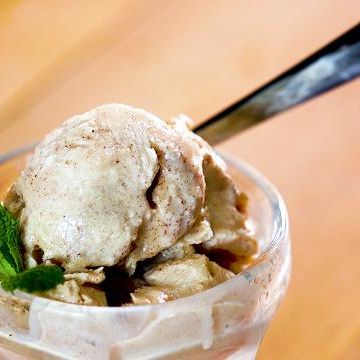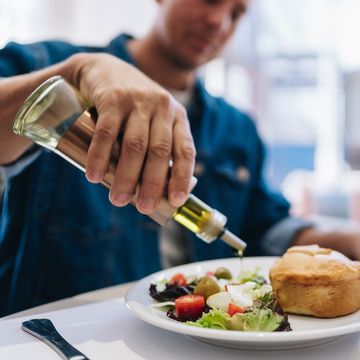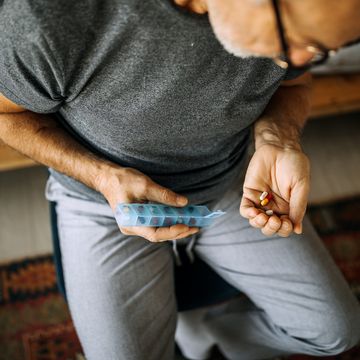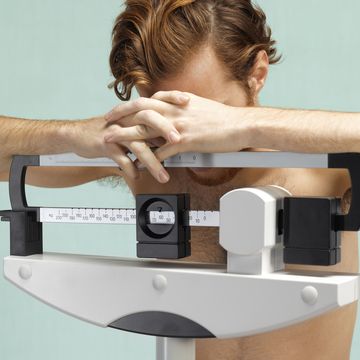Is the key to losing weight tossing your diet to the side? It just may be—at least for a small break, that is, as a new study in the International Journal of Obesity suggests.
In the study, 51 obese men were split into two weight loss groups: One took on 16 weeks of continuous dieting, eating 33 percent fewer calories than would be necessary to maintain their weight. The second took “diet breaks.” They stuck to that same diet for two weeks, then “broke” the diet for two weeks, during which they ate the number of calories necessary to maintain their weight. They kept up this pattern so they had 16 total weeks of dieting, too.
Six months after their dieting expert ended, those the diet cyclers ended up about 18 pounds lighter than those who dieted straight through.
So how did this work? When you’re losing weight, your body goes through a process called adaptive thermogenesis, says obesity expert Spencer Nadolsky, D.O., author of The Fat Loss Prescription.
“Your metabolism (resting metabolic rate) is expected to lower because fat and muscle burn calories at rest. Your resting metabolism is based off your weight. So when you lose weight, it should decrease,” Dr. Nadolsky explains.
Simply put, this means your metabolism slows down even more than expected to compensate the fact you're giving it less energy, making it harder to lose weight.
This metabolic process, called adaptative thermogenesis, is reduced when diet breaks happen. It may be due to leptin levels, the hormone responsible for inhibiting hunger and telling your body you’re full.
“If you lower your caloric intake, leptin goes down. When you lose weight, leptin levels go down. So if you periodically stop dieting and increase your calories, leptin goes up without regaining weight,” says Dr. Nadolsky.
And by reducing the adaptative thermogenesis process, it can keep your metabolism revving, and help you lose more weight.
Still, there are a couple of caveats with the study you should know. First, the study didn’t measure physical activity, so it’s possible that the men who broke their diet were more active, which, of course, could lead to greater calorie burn. (Want a workout plan that'll burn off your fat and build lead muscle? Try The 21-Day Metashred from Men's Health.)
Secondly, participants were provided their meals, which were carefully selected to make sure they hit the calorie requirements. That’s not how it works in the real world, where you're left to fend for yourself and make food choices every time you eat.
So it’s possible that when you take a “break” from your diet, you may end up eating more than your maintenance calorie amount.
But that also may help explain why the diet break can be a good choice for sustainable weight loss, says Dr. Nadolsky.
“It is possible that the diet breaks would allow for more adherence during the restriction periods, thus allowing more weight loss in the end,” he says. (These 12 easy food swaps can help you lose weight.)
Should You Use Diet Breaks to Help You Lose Weight?
While this study was done on obese guys, it’s possible that men who aren't obese but are looking to lose a few pounds can still benefit from this approach.
"You see similar approaches with guys going into physique competitions. They call it calorie cycling. As long as the energy deficit is there, it should work," says Dr. Nadolsky.
First, determine how many calories you want to cut for your “dieting phase.” A good rule of thumb is 33 percent—the same amount used in the study, he says. So calculate how many calories a day you normally eat when you’re maintaining weight, and subtract 33 percent from that.
Follow this for two weeks at time. Then, during your “diet break,” eat your normal amount of calories. Your “diet break” should last two weeks, after which you’d repeat the cycle.
Just a couple reminders for your “break:” It shouldn’t be a free-for-all “cheat” period. Remember, if you want to model your plan after the study, you should be eating at your maintenance during your “break” days. It’s not giving you free rein to eat everything in sight.
“Don’t to think of it as a ‘refeed’ or total diet break. You’ll be at a lower calorie maintenance level after each weight loss cycle, so you shouldn't eat as much as you were before the weight loss,” says Dr. Nadolsky. “It will just be a break from the hard cutting, but not overall.”
So even when you’re “breaking,” you still should be making healthy choices, like lots of lean protein, whole grains, and vegetables, while cutting back on processed foods. But it’s not that you can’t have a little fun—just plan accordingly. (This vanilla muscle ice cream will hit your sweet tooth and feed your muscles.)
VANILLA MUSCLE PROTEIN:
“You can have treats during that break phase as long as it doesn't go much over your new calculated maintenance level,” says Dr. Nadolsky.













